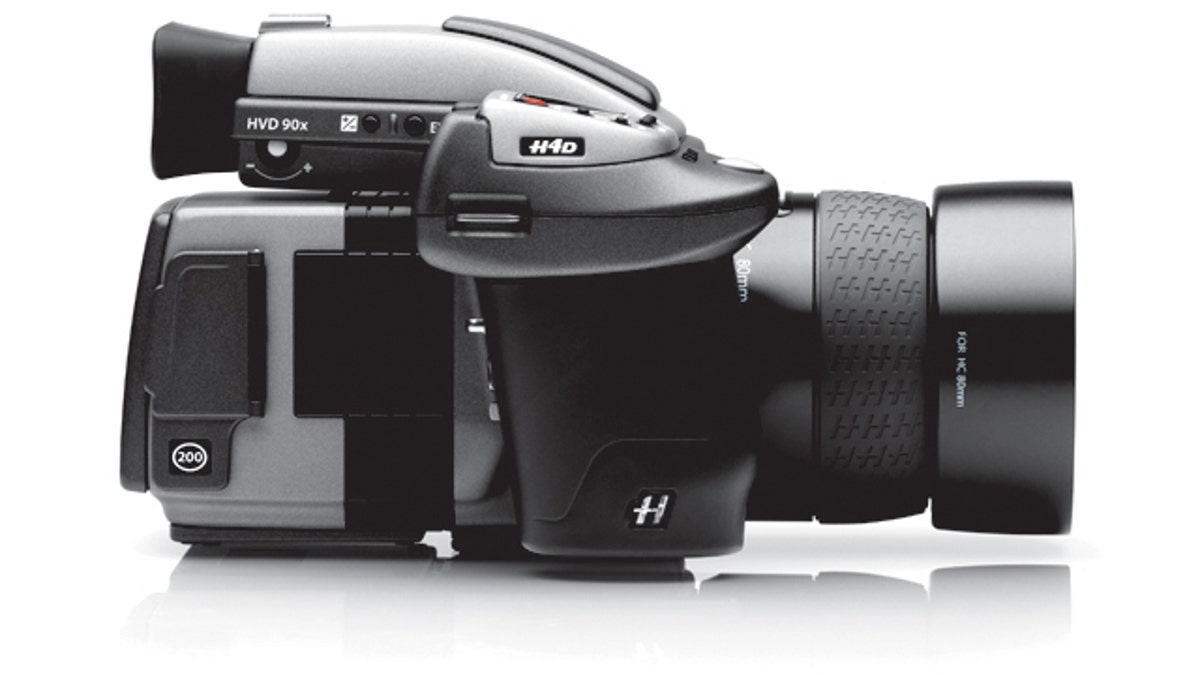
The Hasselblad H4D-200MS is a 200-megapixel digital camera certain to top enthusiast's holiday wish lists. (Hasselblad)
Which camera is the best one to use? The one you have with you.
Often, that's the smartphone in your pocket or purse. But for special situations, you may want to rethink that conventional wisdom: Digital cameras, particularly advanced cameras such as the Sony Cyber-shot DSC-RX10 advanced point-and-shoot, $1,300, do a much better job than a smartphone ever could.
To demonstrate just how well an advanced camera performs, I recently used the RX10 for some test shots at a birthday party to see how well it captured my son in front of a flaming birthday cake—a scene that can be a challenge to shoot without a flash. For comparison, I took the same shots with my Apple iPhone 5. The huge difference in photo quality shows how vital a real digital camera can be when you're shooting important events.
In one sense, it's not a fair comparison, because an advanced camera such as the RX10 isn't cheap. You're paying for features and capabilities you just can't get on a smartphone. But lower-priced cameras can still outperform smart-phones cameras.
Here are five reasons a camera such as the RX10 can take much better photos than a smartphone. In each sample shot, the RX10 photo is on the left and the iPhone 5 photo is on the right.
For more on SLRs and point-and-shoots, check our buying guide and Ratings for cameras.
A bigger sensor
Advanced cameras have much larger sensors than smartphones, and that can dramatically improve low-light shots when you don't want to use a flash. For example, the Sony RX10 includes a 1-inch CMOS sensor, which is several times larger than sensors found on many smartphones. As you can see in the photo of the birthday cake (at top), the RX10 captures more contrast in my son's face and shirt. The iPhone photo on the right exhibits image noise and visual artifacts. You'll often see a conspicuous pattern of artificial colored dots, too.
More precise controls
Smartphones can be appealing to use because they have big touch-screen LCDs with intuitive controls. But for taking photos, you really want physical controls. To set your advanced camera precisely, nothing beats a manual focus ring, an exposure dial, or even something as simple as a responsive shutter button.
A versatile lens
Some advanced digital cameras include powerful lenses. One thing that makes this Sony unique is its 24mm-200mm zoom lens with a constant f/2.8 aperture. A constant aperture is important not only for letting more light in over the length of the zoom, but also for creating a shallow depth of field (which blurs the background), even at the telephoto end of the zoom. You can see this in my photos of the salad (above), in which the RX10 photo completely blurs the fire in the fireplace in the background. It's a powerful feature that can make your photos look more professional.
Real optical—not digital—zoom
Almost all smartphones (except the Samsung Galaxy S4 Zoom) use digital zoom to get closer to subjects, which often introduces image noise and visual artifacts into the photo and degrades image quality. But an advanced camera such as the RX10 includes a true optical zoom lens that lets you get closer to your subject without lessening image quality.
Flexible flash
Almost all smartphones include a very weak LED light for a flash, which is rarely adequate for properly illuminating subjects. Advanced cameras have a versatile flash, which almost always has a flash-compensation control to make the flash stronger or weaker. They also generally include a hot shoe, which lets you attach an external strobe to the camera for even more versatility in your lighting.
Copyright © 2005-2014 Consumers Union of U.S., Inc. No reproduction, in whole or in part, without written permission. Consumer Reports has no relationship with any advertisers on this site.
